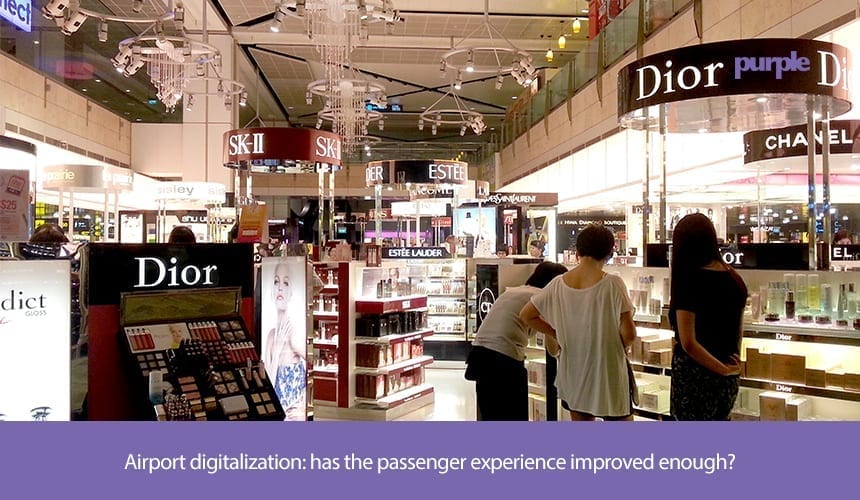Passengers have been embracing technology for years, relying on their smartphones, tablets and other devices to stay informed and up-to-date when traveling. Many airports have bought in too, investing heavily over the past few years in self-service technology that keeps passengers informed, creates more efficient passenger journeys and improves the overall airport experience.
Recently, it seems airports have uncovered an important secret about improving the passenger experience. The better the experience, the more comfortable the passenger, which in turn has a direct impact on the amount they spend whilst in the airport.
Keeping passengers well informed not only improves overall satisfaction and reduces the pressure on customer service teams, but it also leads to passengers spending more money.
Over the next decade (2016 to 2025), digitalization in aviation, travel and tourism is expected to create up to $305 billion of value for the industry, and also migrate $100 billion of value from traditional players to new competitors, according to a recent World Economic Forum report.
It seems passengers are also increasingly more open to using digital services to get themselves – and their bags – from departures and boarding, to arrivals at their destination.
A 2017 survey by SITA on Passenger IT Trends reports that 74% of passengers would use alerts on flights and gates pushed straight to their smart devices if available, that 64% would track their baggage in real-time via a mobile app if available, and that 57% of passengers would use wayfinding.
But what is the best way for airports to approach this opportunity?
While airports are investing in infrastructure and technology to improve the passenger journey, generally speaking, the majority of passengers still view being at the airport as a stressful experience.
Your checked bag must be under a certain weight. Security queues are long. Unfamiliar airports can be difficult to navigate. Flights get delayed or worse, cancelled. Throw in traffic on the way to the airport, rental car drop-offs, overcrowded waiting areas and rushed meals for fear of missing your flight and you’ve got a recipe for anxiety and frustration – which, of course, is not very conducive to passenger spending.
It is with these factors in mind that airports are now taking the ‘digital experience’ one step further; leveraging emerging technologies to develop even more passenger-centric models aimed at creating a positive airport experience.
It is important to note that this use of technology shouldn’t be focused on a single touch point, but rather to create consistency throughout the end-to-end passenger journey from check-in and waiting areas, to baggage handling, passport control and on-boarding.
Airports need to champion innovation and information transparency, and better integrate flight information into their business operations, particularly in the restaurant and retail scene if they wish to drive passenger spend further.
It is also important that they use these technologies to better understand their passengers, because in order to create operational models that are truly passenger-centric, airports need to know exactly who their customers are.
By collecting and analyzing customer data, airport operators can begin to tailor services to each individual passenger; increasing loyalty by differentiating the airport experience and driving passenger spend through engagement personalized to their interests.
